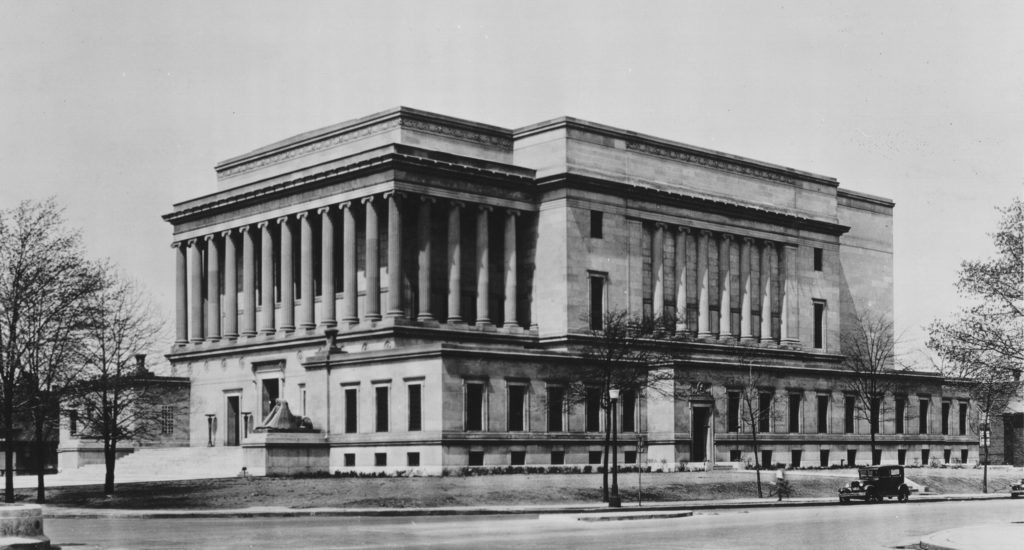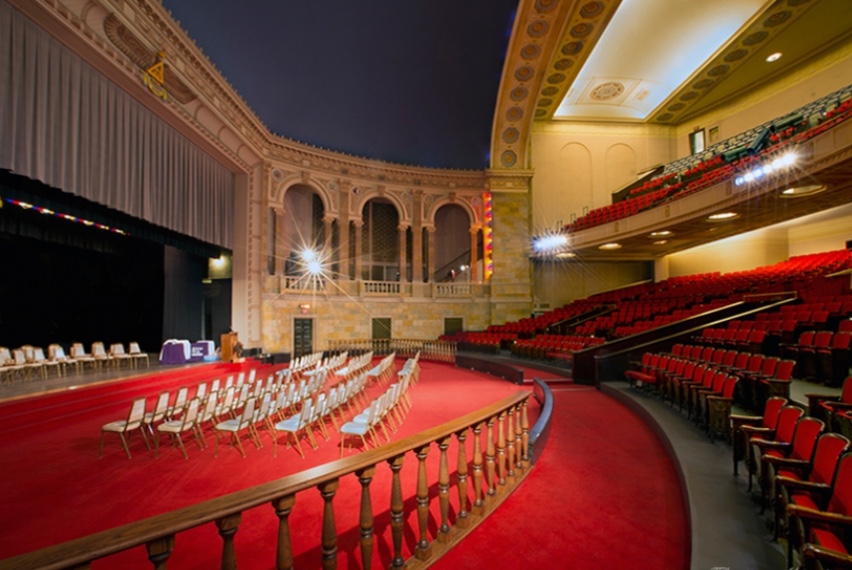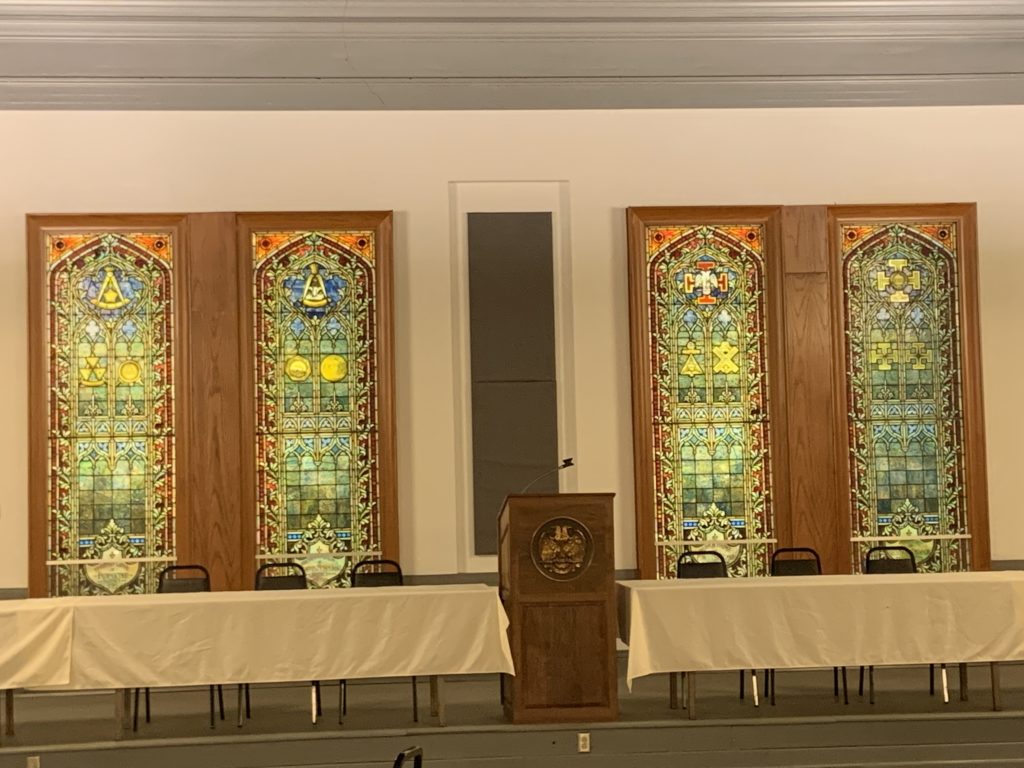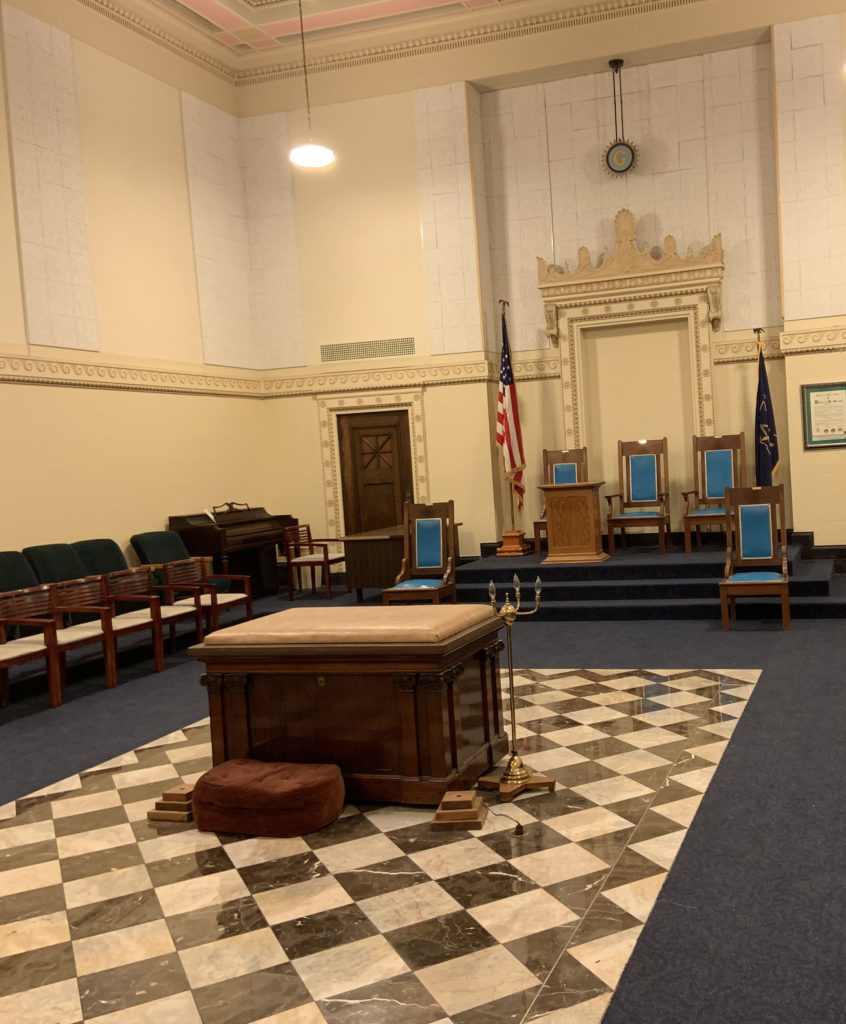
The Kansas City Scottish Rite of Freemasonry Temple is a massive structure that has fascinated those driving along Linwood and the Paseo for years. The Scottish Rite, the largest branch of Freemasonry, still uses the building for meetings and administration. Faced with the ever-soaring cost of maintenance, however, the group hopes a 2019 renovation will encourage those looking for event space for weddings, concerts, graduations and conventions to book the Temple.
Wes Wingfield, secretary of the Temple and a South Hyde Park resident, says the group hopes the rebirth of the area around the Temple will bring in new business and help pay the bills so that the Temple can remain open for many years. He offered the MidtownKC Post a tour of the renewed facilities. (See more and learn about renting the Temple)

As part of our Uncovering History Project, the Midtown KC Post is taking a look at each block in Midtown, including a set of 1940 tax assessment photos which is available for many blocks. (Many people seem confused by the tax assessment photos, which all include a man holding a sign. Here’s the story behind them). This post focuses on the Scottish Rite Temple. Unfortunately, the Kansas City Public Library does not have the 1940s photos from the block from the Paseo to Tracy between East 31stStreet and Linwood.





About 3500 people attended the cornerstone laying ceremony the of the new Temple in 1929. “The famous Washington trowel, property of the Alexandria-Washington Lodge No. 22, which was used by George Washington in the laying of the corner stone for the national capital in Washington, was a special feature of the program,” according to a May 10, 1929 Kansas City Star article, which noted that a special committee of Virginians transported the trowel. It was used to seal a small copper box inside the cornerstone.
When the new Temple was dedicated in 1930 after two years of construction, prominent Masons and Scottish Rite officials from across the country came to Kansas City for the ceremonies. At that time, the Kansas City Scottish Rite had 700 members, one of the largest memberships in the country.
The Scottish Rite lost the building briefly in the 1950s, but got it back in 1969. It was used by the Kansas City Philharmonic in the 1950s to record albums, and was praised for its fine acoustics. The Kansas City Symphony used the building as a temporary home in the 1990s.
Historic photos courtesy Kansas City Public Library/Missouri Valley Special Collections.
Was this not used by the carpenters as their union hall?